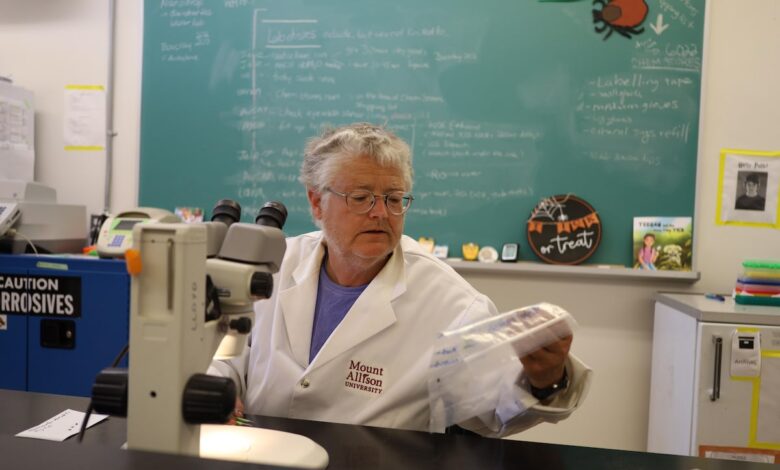NB Professor wants to broaden the check mark after fighting Lyme disease

Ticks can pick up the bacterium when they feed on an infected rodent, and then transmit it to humans during their next blood meal. This is why it’s crucial to be aware of the habits and habitats of ticks in order to prevent Lyme disease.
One important aspect of combating ticks is understanding their behavior and life cycle. Ticks go through several stages in their life cycle, starting as eggs and progressing to larvae, nymphs, and finally adults. Each stage requires a blood meal to survive and grow, with adult female ticks laying thousands of eggs after feeding.
Ticks are commonly found in wooded areas, tall grass, and shrubs where they can easily latch onto passing animals or humans. By avoiding these habitats and taking precautions such as wearing long sleeves and pants, using insect repellent, and performing regular tick checks after being outdoors, the risk of tick bites and Lyme disease can be minimized.
Education and awareness are key in the fight against ticks and Lyme disease. By understanding the biology and behavior of ticks, individuals can take proactive measures to protect themselves and their families. Researchers like Dr. Vett Lloyd are leading the way in studying ticks and raising awareness about the growing threat they pose to public health.
As the climate warms and tick populations continue to increase, it’s more important than ever to stay informed and vigilant when it comes to ticks and Lyme disease. By working together to combat this growing threat, we can reduce the risk of tick-borne illnesses and ensure a safer, healthier future for all. Ticks are notorious carriers of diseases, with the ability to infect humans and animals alike. When a tick feeds on its host, it can pass on pathogens that it has acquired from previous meals. This cycle continues even after the tick matures into an eight-legged nymph, making it a dangerous vector for disease transmission.
Black-legged ticks, also known as deer ticks, have a unique strategy for finding a blood meal. They climb to the top of a leaf or blade of grass, extend their front legs, and wait for a passing warm-blooded host. Once they latch on and begin feeding, it takes about 24 hours for the tick to fully engorge itself with blood in what scientists call the ‘big sip’.
Ticks have evolved various strategies to stay attached to their hosts. Nymphs, which are the size of a poppy seed, are hard to detect, while their mouthparts contain hooks and a glue-like substance called ‘drawing cement’. Additionally, an infected tick must be attached for more than 24 hours before diseases can be transmitted, as the pathogens migrate from the gut to the salivary glands.
In the final stage of their life cycle, adult ticks seek to mate. Female ticks require a final blood meal to lay their eggs, often seeking larger mammals like white-tailed deer for this purpose. As the number of ticks in Canada continues to rise, researchers like Dr. Lloyd are working towards better diagnostics and understanding the behaviors of these disease-carrying parasites.
Dr. Lloyd’s research is driven by a personal understanding of the impact that tick-borne illnesses can have. She recalls a heartbreaking story of a man who sought help for chronic Lyme symptoms, only to tragically succumb to suicide. This serves as a reminder of the devastation that ticks can cause and motivates her to continue her work in finding solutions.
As the threat of tick-borne diseases looms, it is crucial to stay informed and take necessary precautions when venturing into tick-infested areas. By understanding the behavior of ticks and the risks they pose, we can better protect ourselves and our loved ones from these tiny but dangerous parasites.



